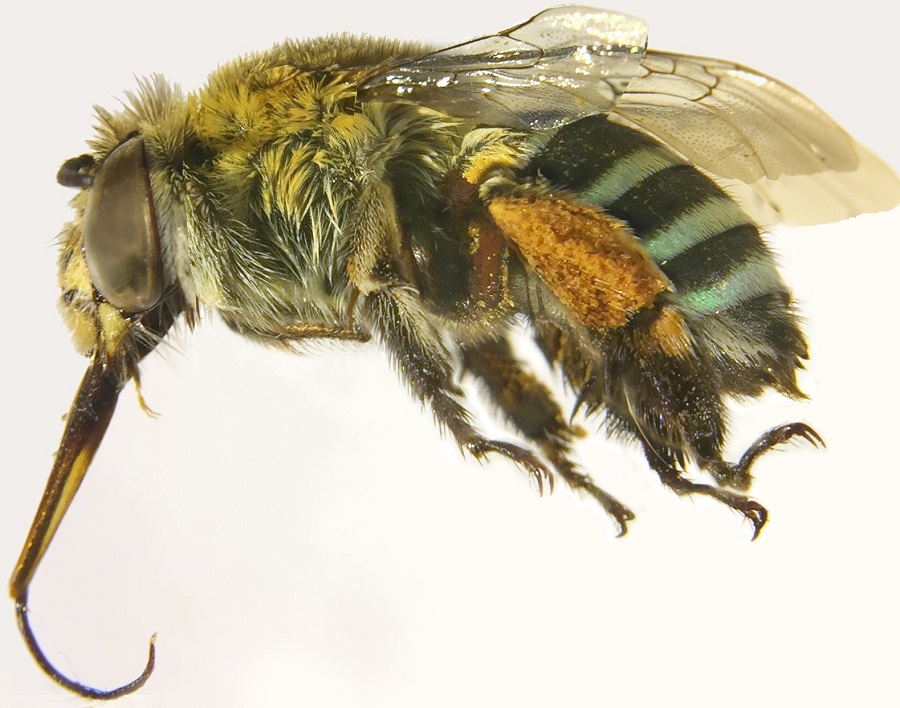We're digitising our collection of Australian native bee specimens to make our bee biodiversity data available to the world.

A blue-banded bee, Amegilla (Zonamegilla) asserta, from the Australian National Insect Collection. This specimen was collected in 1971 and still has pollen stuck to its legs. Photo by Juanita Rodriguez Arrieta.
A native blue-banded bee, collected in 1971, which still has pollen stuck to its legs.
The European honeybee may be the hero of pollination, but Australia actually has more than 1,500 species of native bees that pollinate many of our native plants and agricultural crops. Pollination moves pollen from male parts to female parts of flowers, enabling plants to produce seed. In some species, wind or water carries pollen between flowers.
Other plants depend on animals, like bees, other insects, birds and bats, who end up with pollen stuck to their bodies when they visit plants to feed, shelter or reproduce. Both biodiversity and food security depend on the pollination services of animals. And both native plants and our food crops face risks when their pollinators are threatened by habitat loss, pesticides, diseases and climate change.
How can we help? Our insect collection in Canberra holds more than 50,000 bee specimens collected all over Australia during the past 80 years. Each bee tells part of the story of where Australia’s more than 1500 bee species live, how their distributions have changed over time, and what plants they live on and pollinate. Listening to this story is important for predicting future trends in pollinator abundance and activity and understanding what this will mean for both native our biodiversity and our pollinator-dependent industries.
To speed up research by making our precious bee biodiversity data available worldwide, we are digitising our bee collection. This involves high-resolution imaging of specimens and capturing metadata, the information associated with each specimen, like when and where it was collected and what plants were growing nearby.
So far, we’ve digitised 36,000 of our bee specimens, for a cost of around $1 per specimen. It’s part of a worldwide effort to understand bee diversity that includes partners such as the Smithsonian National Museum of Natural History. Volunteers and students have joined us, speeding up the project and gaining skills in curation and digitisation. Citizen scientists are transcribing our bees’ specimen labels using the online volunteering portal DigiVol, a collaboration between the Australian Museum and the Atlas of Living Australia.
Thanks to BushBlitz for funding this project and a shout out to the Australian Museum, who helped us curate our bee collection. Taxonomic classification requires detailed knowledge and is a skill essential to managing Australia’s biodiversity into the future.
Access to our digitised natural history collection data, from bees to butterflyfish, is freely available worldwide through the Atlas of Living Australia.

